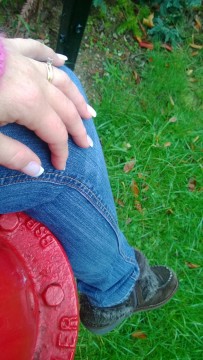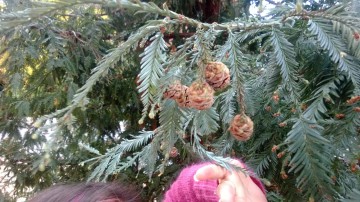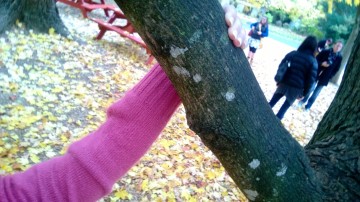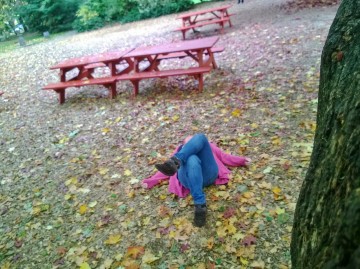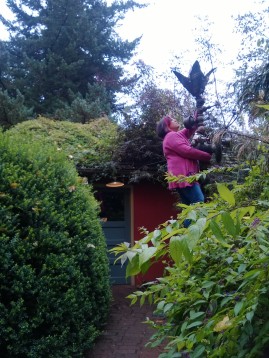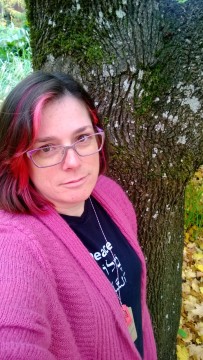
cc licensed (BY NC SA)
As I pondered “Bloggers in Planet Love” for Valentine’s Day, I thought that there is something to the visions of paradise that seem to permeate religious cultures. I never see paradise populated by buildings towering into the sky! There are always elements of lush green lands, towering trees, and people living as one with nature. That seems to be sacred space.
And sacred space is realized in different cultures almost always in natural spaces. I remember the journeys of Moses up the mountain top, zen mountain monasteries, the sacred Heart Butte of the Blackfeet…and more down to earth, the ordinary everydayness of working in a beautiful garden box. Connecting with the earth and with ancient rhythms.
Just a moment’s digression. Connecting with the earth. I want to change that to cosmos. I am thinking of the ancient Greek word kosmos. Kosmos is typically translated from ancient Greek to the word world or earth. But it really is equivalent to something like, “all the known existence.” Our cosmos is ever expanding. Our understanding of creation is also. Expanding in energy, connectivity, and creativity.
That is Paradise.
I’d like to take a moment to do a short meditation on realizing paradise and loving the cosmos. First, sit down, put your feet flat on the floor or ground. Let your arms rest comfortable. Let your gaze rest gently on the screen. Slow your breathing. Shake your body out, roll your head, roll your shoulders, settle into calmness.
Let us begin.
Breathe in, saying, “Earth”
Breathe out, saying, “Love”
Breathe in, saying, “Cosmos”
Breathe out, saying, “Love”
Breathe in, saying, “Earth”
Breathe out, saying, “Love”
Wiggle your toes. Scooch your feet into the floor a little. Feel the textures. Describe them. It is part of creation. Of paradise. Let your feet feel not only the floor and its coverings, but send your energy downward. Connect to the earth that supports you and all things.
Breathe in, saying, “Hello”
Breathe out, saying “Love”
As your energy goes downward through your feet to the floor, to the earth, ponder what is missing? Can you feel the absence in creation of a necessary energy? Is there something crying out for your attention? Ask the earth, the cosmos, what attention it wants from you.
Breathe in, saying, “What is”
Breathe out, saying, “Your desire?”
Resting your hands lightly on your hips, keep breathing, focusing on what you are hearing as an answer, through your feet. What is reverberating through your legs, into the root of your spine? This is the location of security, grounding, and survival. Keep asking the earth…
Breathe in, saying, “What is”
Breathe out, saying, “Your desire?”
Resting your hands lightly on your stomach, with your connection to the earth firm through your feet, let your attention travel from the root of your spine upward to the area under your bellybutton. This is the location of sexuality, creativity, and relationships. How is this part of your body reacting to this connection and question? What are you feeling?
Keep asking the earth…
Breathe in, saying, “What is”
Breathe out, saying, “Your desire?”
Resting your hands lightly on your solar plexus or diaphragm, with your feet firmly grounded, feeling the energy reverberating upwards, let your attention travel to the solar plexus. How is this part of your body reacting to this connection and question? Here we find energy, vitality, and personal authority. What are you feeling?
Keep asking the earth…
Breathe in, saying, “What is”
Breathe out, saying, “Your desire?”
Resting your hands lightly on your heart, checking in with your feet, your naval, your solar plexus, move onward to your heart–the seat of balance, love and connection. How is your heart reacting to this journey? Is energy gathering here? Or is your heart at peace?
Keep asking the earth…
Breathe in, saying, “What is”
Breathe out, saying, “Your desire?”
Resting your hands lightly on your throat, moving onward to your throat, still holding a conscious connection to the earth through your feet and the root of your spine, do you feel anything? Sometimes, our voice feels silenced or choked. Other times, we want to sing out of joy! Can you see both? The beauty of the cosmos calling out in song? And the imbalance of the earth? Is your voice choked and suffering? Or is it singing and witnessing? The throat is the seat of communication and healing. What energy do you feel?
Keep asking the earth…
Breathe in, saying, “What is”
Breathe out, saying, “Your desire?”
Resting your hands lightly on your forehead, check in with the earth at your feet, wiggle your toes just a moment, see that everything is doing fine, move upward to just above your eyes. Here is the seat of your intuition and understanding. You have been listening to the earth. Asking, “What is your desire?” Do you sense an answer? Is the earth noisy today? Or quiet? What energy do you feel?
Keep asking the earth…
Breathe in, saying, “What is”
Breathe out, saying, “Your desire?”
Let your hands almost form over your head as if you are holding a hat in place, staying fully connected through your toes all the way to just above your head, check in with your whole self, with the whole earth, and ask if it is okay to move onward. Focus your thoughts into the space above your head. Here, is transcendental connection to all that is. What is it that you desire? What is it that the cosmos is desiring of you? Do you hear or feel a call?
Breathe in, saying, “Earth”
Breathe out, saying, “Love”
Breathe in, saying, “Cosmos”
Breathe out, saying, “Love”
Breathe in, saying, “Earth”
Breathe out, saying, “Love”
Shake your hands out, letting them drop to your sides. Move your attention from your crown, thanking it for the wisdom it has provided you this down. Move downwards, one by one, thanking your body for listening to you and to the earth.
Breath in, saying, “Dear Eyes”
Breath out, saying, “Thank you for understanding.”
Breath in, saying, “Dear Throat”
Breath out, saying, “Thank you for telling.”
Breath in, saying, “Dear Heart”
Breath out, saying, “Thank you for compassion.”
Breath in, saying, “Dear Diaphragm”
Breath out, saying, “Thank you for desire.”
Breath in, saying, “Dear Stomach”
Breath out, saying, “Thank you for creative answers.”
Breath in, saying, “Dear Spine”
Breath out, saying, “Thank you support.”
Let your attention travel back to your toes, concentrating on a full connection to the earth. Look to the earth and to the cosmos. Bow inwardly, inclining your head and your attention, wishing the earth, “Peace be with you.”
And peace be with you.
Shalom and amen,
~Terri
(c) 2014, post, Terri Stewart
REV. TERRI STEWART is The Bardo Group’s Sunday chaplain, senior content editor, and site co-administrator. She comes from an eclectic background and considers herself to be grounded in contemplation and justice. She is the Director and Founder of the Youth Chaplaincy Coalition that serves youth affected by the justice system. As a graduate of Seattle University’s School of Theology and Ministry, she earned her Master’s of Divinity and a Post-Master’s Certificate in Spiritual Direction.
Her online presence is “Cloaked Monk.” This speaks to her grounding in contemplative arts and the need to live it out in the world. The cloak is the disguise of normalcy as she advocates for justice and peace. You can find her at www.beguineagain.com ,www.twitter.com/cloakedmonk, and www.facebook.com/cloakedmonk.
















